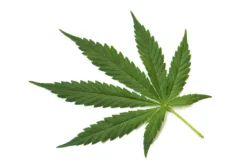Opioid Addiction and Treatment Options

It’s unfortunately common to read or hear about heroin related overdoses in the news. Some of us may even have a friend or loved one who has struggled or is currently struggling with opioid addiction. It’s understandable, then, that heroin is often the first thing that comes to mind when hearing terms like “opioid abuse” or “the opioid epidemic.”
However, illicit drug use is only one part of opioid addiction and the current opioid crisis afflicting the U.S. Sadly, opioid abuse often begins with prescription painkillers.
Common opioid drugs
While heroin was responsible for about 15,400 overdose deaths in 2017, this number accounts for less than one-third of all opioid-related overdoses. In fact, prescription opioid overdose accounted for around 17,000 deaths in 2017. Meanwhile, fentanyl – a synthetic opioid – accounted for an additional 28,400 deaths according to data collected by the CDC.
Common opioids include:
- Hydrocodone;
- Heroin;
- Fentanyl;
- Codeine;
- Oxycodone;
- Morphine;
- Opium;
- Tramadol.
These opioids are not all illicit, and some are commonly prescribed by doctors as painkillers for their patients.
Prescription opioids
Opioids are often prescribed as a pain management treatment – often after a surgery or injury. However, opioid prescription has been on the rise in the U.S. since the 1990’s. More than 191 million opioid prescriptions were filled in 2017 alone. This includes generic and name brand drugs like Vicodin (hydrocodone) and OxyContin (oxycodone).
Despite being legally prescribed, these medications can be highly addictive. According to the CDC, as many as twenty-five percent of patients receiving long-term opioid therapy eventually struggle with opioid addiction.
What does an opioid addiction look like?
An opioid addiction is typically defined by an individual being unable to stop usage without negative withdrawal symptoms. Additionally, physical and psychological signs will present themselves:
Physical signs
Physical signs of opioid use can include:
- Slowed or shallow breathing;
- Loss of coordination;
- Drowsiness;
- Slurred speech;
- Intense nausea or vomiting.
Psychological signs
Opioids can have profound effects on the brain, which often cause psychological and behavioral signs, such as:
- Drastic mood swings;
- Changes in sleeping patterns;
- Lowered motivation;
- Irritability;
- Abandoning responsibilities and relationships.
If an individual presents with these symptoms, it may be a result of opioid use.
Withdrawal symptoms
When a person stops using an opioid after regular or heavy use, withdrawal symptoms often occur. Someone experiencing opioid withdrawal may suffer a number of undesired physical and mental effects as their body filters out the drug.
Common signs of withdrawal include:
- Anxiety;
- Agitation;
- Muscle aches and pain;
- Restlessness and inability to sleep;
- Heavy sweating;
- Abdominal cramps;
- Diarrhea;
- Intense nausea and vomiting;
- Rapid heartbeat;
- High blood pressure.
Withdrawal is difficult and can often result in relapse and overdose, so proper treatment is crucial, especially when going through withdrawal.
Causes and risks of opioid addiction
Substance use disorders, including opioid addiction, can have a variety of causes.
Genetic factors
According to the National Institute on Drug Abuse, as much as half of a person’s risk of becoming addicted to a substance may be dependent on their genetic makeup. Several genetic factors of opioid addiction can include:
- Family history of addiction or substance misuse;
- Co-occurring mental health disorders (depression, anxiety, etc.);
- Risk-taking or thrill-seeking personality.
Behavioral factors
Like genetics, certain behavioral traits can increase an individual’s risk of opioid addiction, including:
- Personal experience with drug use or experimentation;
- Previous criminal activity;
- Regular or heavy tobacco use.
Environmental factors
Equally as powerful as genetic and behavioral factors are the environmental and social risk factors. These can include:
- Poverty or unemployment;
- Stressful life or family situations;
- Severe pressures at home or at work.
Lastly, it’s important to understand that one of the leading causes of opioid addiction is prescription misuse. Be certain to closely adhere to prescription instructions as set by your physician or primary care provider. If you have a personal or family history of substance use disorder or mental illness, be sure to talk to your doctor about whether opioid painkillers are right for you.
What is the treatment for opioid addiction?
It’s important to seek treatment if you are suffering from opioid use disorder. There are several types of treatment available for opioid addiction.
Outpatient rehab
Outpatient programs are designed for individuals using drugs or alcohol and who are in need of frequent sessions to maintain abstinence. Common features of outpatient rehab include:
- Patients do not have to stay at the facility;
- Treatment programs run during the day;
- Typical programs are 10-12 hours throughout the week;
- Often an opportunity to gain control over substance use before beginning further inpatient treatment.
Rehab After Work offers multiple outpatient rehab and therapy programs across all 12 of our Pennsylvania locations.
Inpatient rehab
Inpatient rehab treatment is more intense, with program features like:
- Program lengths between four weeks to several months;
- Living quarters at the treatment facility;
- Access to around the clock support;
- Elimination of the distractions of daily life to focus solely on recovery;
- Can take place in a hospital or in a more homelike environment at a residential treatment center.
Medication assisted treatment
Medicated-Assisted Treatment (MAT) combines counseling and behavioral therapy with FDA-approved medications to treat substance use disorders. A commonly used medication is Vivitrol, a non-addictive, non-narcotic extended release medication approved by the FDA for the treatment of opioid dependence.
Addiction counseling
Addiction counseling typically occurs one-on-one with a licensed therapist. Counseling can take place as part of a treatment facility program or as a stand alone service offered by private therapists. Addiction counseling often utilizes cognitive behavioral therapy (CBT) and other techniques to help patients change existing behavioral and psychological patterns.
If you or a loved one are suffering from substance abuse, Rehab After Work is here to help. Call anytime at 610-644-6464.








